Doctor Aimee Bourne
Candidature
 Graduated PhD 2016
Graduated PhD 2016
Thesis Title
Forest ecosystem water use: does species identity and ecosystem composition matter?
Research Project
Australia's native forests and woodlands are biologically diverse, yet in large-scale tree-plantings for reforestation we still use species monocultures according to traditional forestry practices. While forest water-use and susceptibility to drought are key concerns in plantation establishment and management in Australia, we have little understanding of how water-use or drought tolerance of plantations is affected by tree species diversity. It is commonly assumed that forest water-use per unit leaf area of trees is independent of species identity and diversity, despite evidence that species can differ significantly in the dynamics of water-use in relation to environment.
Transpiration accounts for a large portion of water loss from land surfaces and dominates the loss of water from vegetated ecosystems. To date there is no study which has experimentally addressed the relationship between species diversity and stand water-use. There is still no consistent framework for estimating the contribution of individual species or species groups to whole plantation or ecosystem water-use. Understanding the magnitude of water losses from ecosystems and how they affect water balance is crucial to future planning in Australia in regards to catchment management, water conservation and adaptation potential to climate change.
I aim to address this issue using model ecosystems of native Australian tree species with a range of different ecological characteristics. These model ecosystems will be grown in a progression of species richness from single-species monocultures (Eucalyptus crebra and E. tereticornis) to 2- and 4-species (E. elata and E. fibrosa) mixtures to overall species-rich plots containing 8 tree species representing reconstructed native ecosystems. Water-use of these forested ecosystems will be measured using the Heat Ratio Method (HRM) and soil moisture sensors. Preliminary data for species monocultures suggests that there are differences in the canopy conductance response to vapour pressure deficit (environmental variation) of E. crebra and E. tereticornis. These species are the major focal species of this study, representing 'drought-tolerant' and 'drought-avoiding' species respectively.
Research Project Photos
Photos relate to Diversity Plantation (planted 2011) and Common Garden (established 2007 at HFE).
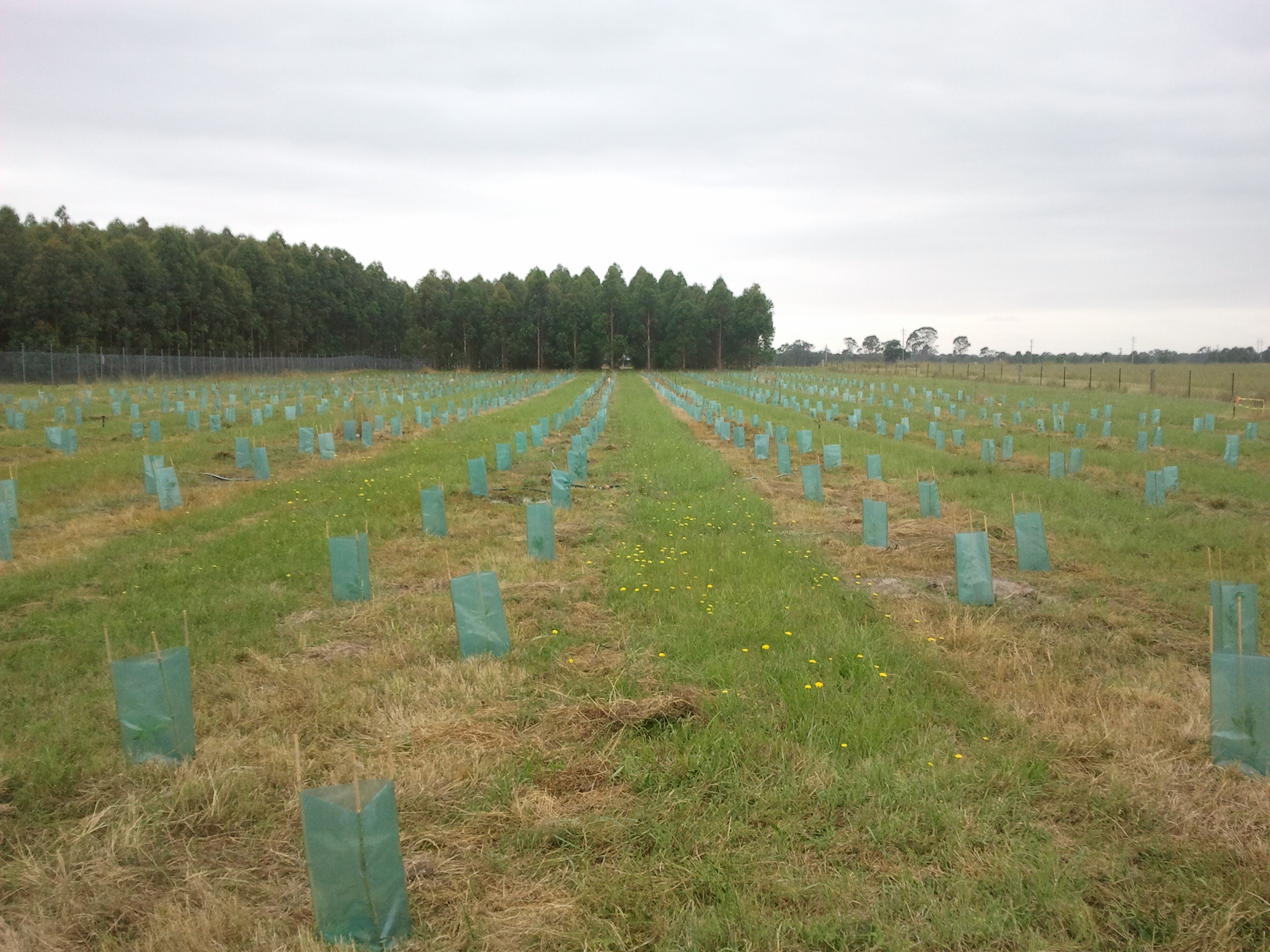
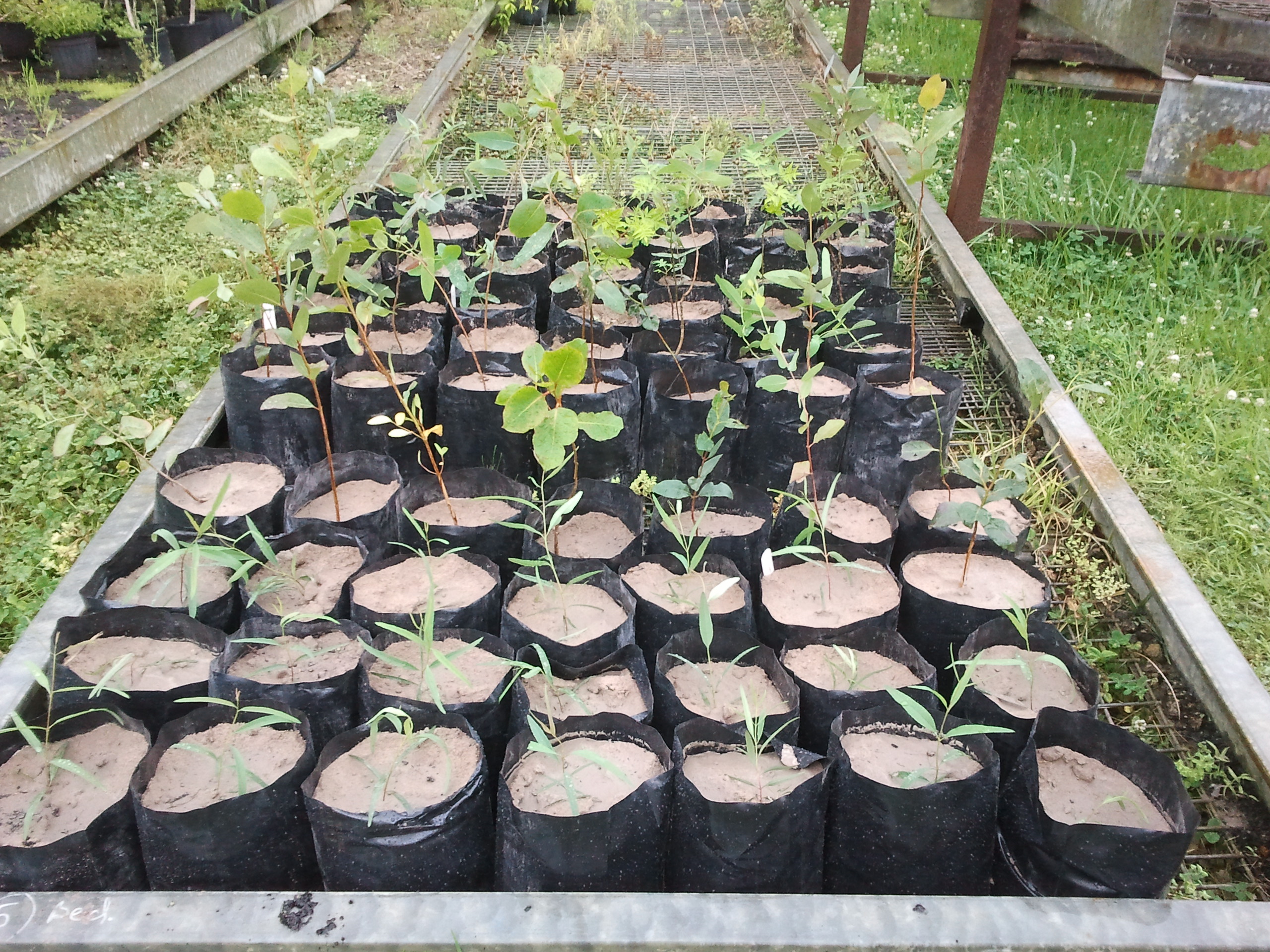
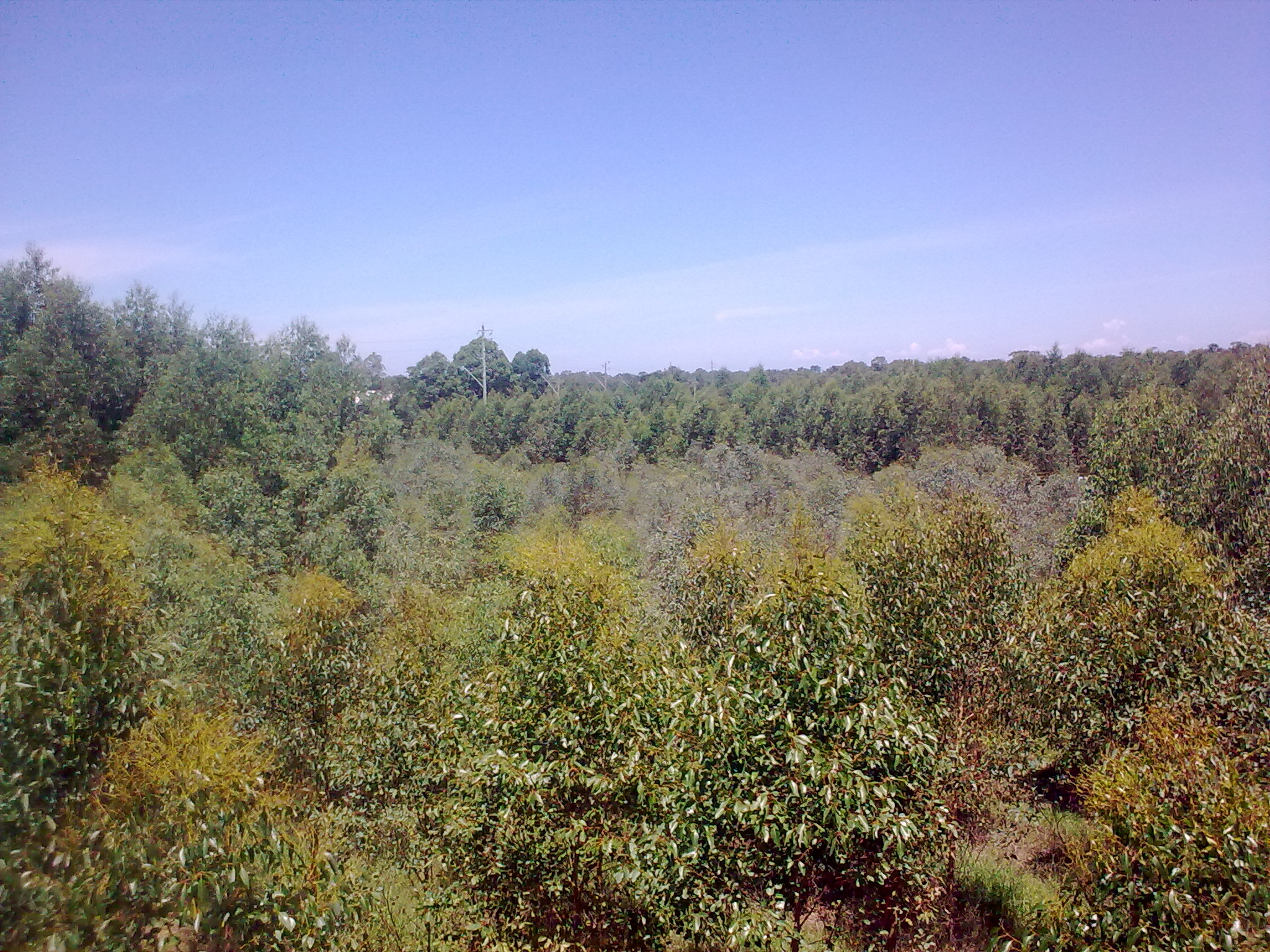
| Diversity Plantations - 1 day after planting | These plantations contain monoculture, irrigated mixture, unirrigated mixture and diverse plots |
| Spare Potted Plants - 8 different species | The 8 species planted including Eucalyptus crebra, E. tereticornis (focal species), E. fibrosa, E. elata, Angophora subvelutina, A. floribunda, Melia azedarach and Melaleuca linariifolia |
| Common Garden - at 3 years planting | The Common Garden is planted at the Hawkesbury Forest Experiement (HFE) site and contains 7 different species of Eucalypt. Each plot is a monoculture of a different Eucalyptus species. |
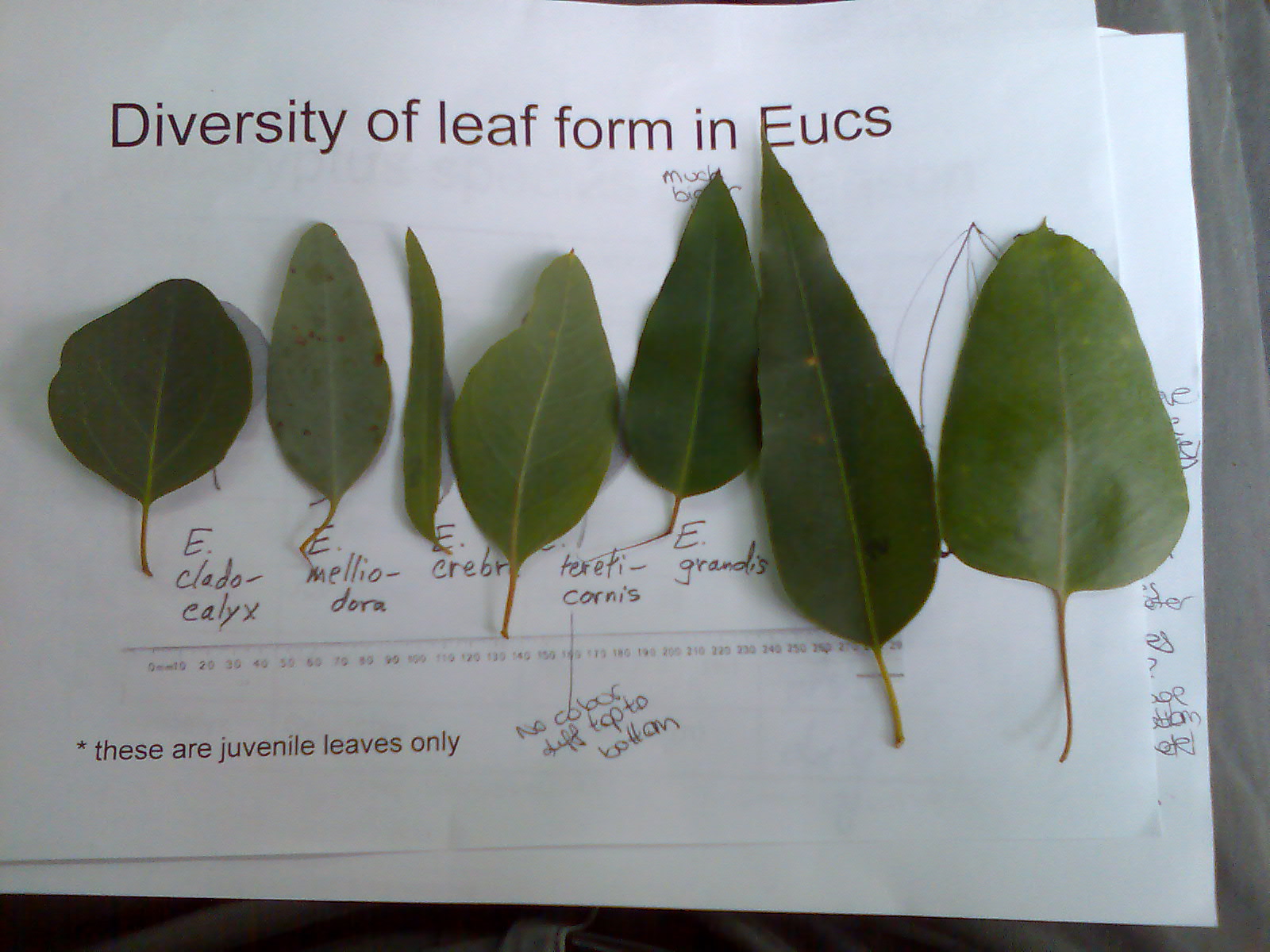
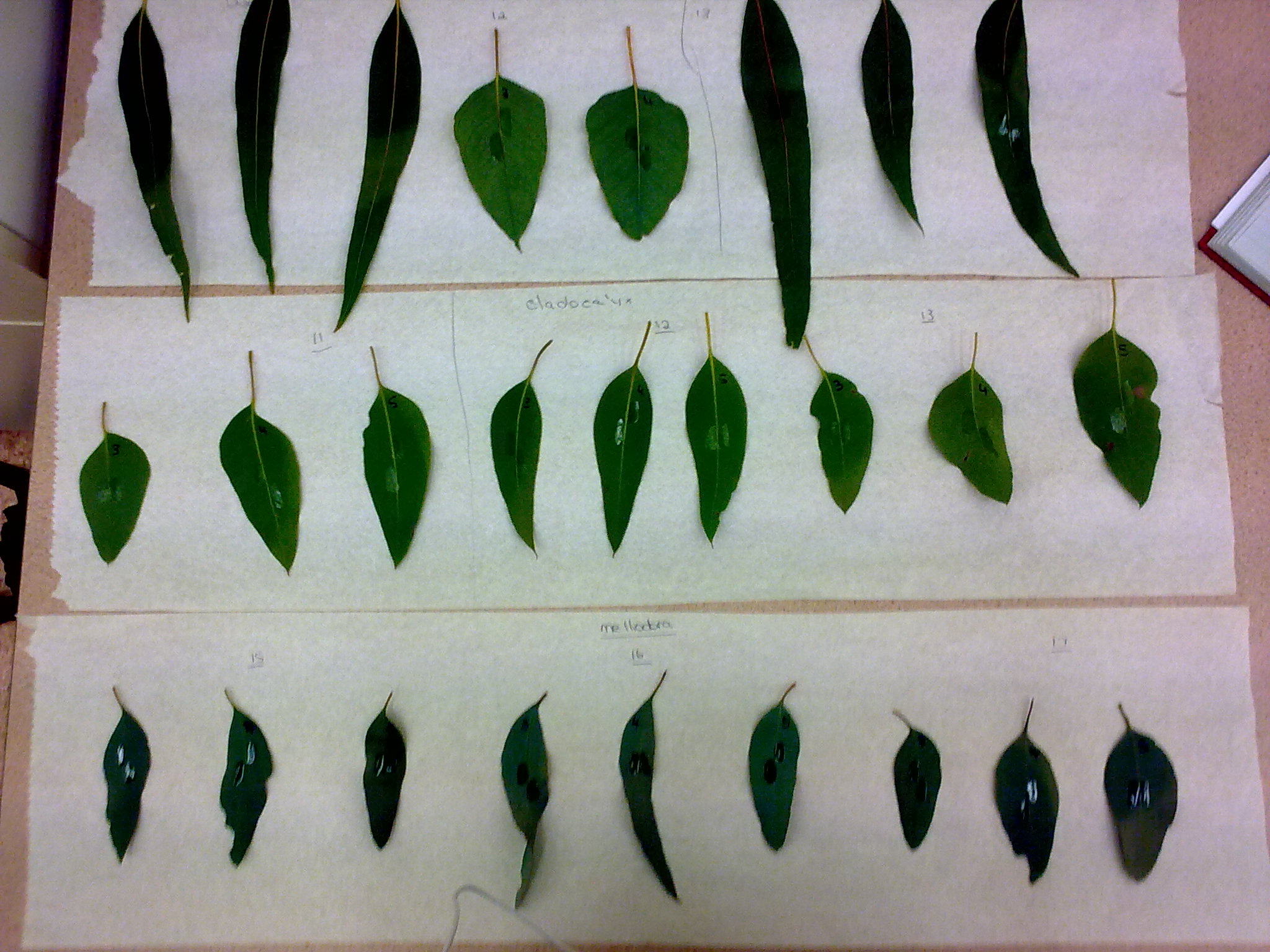
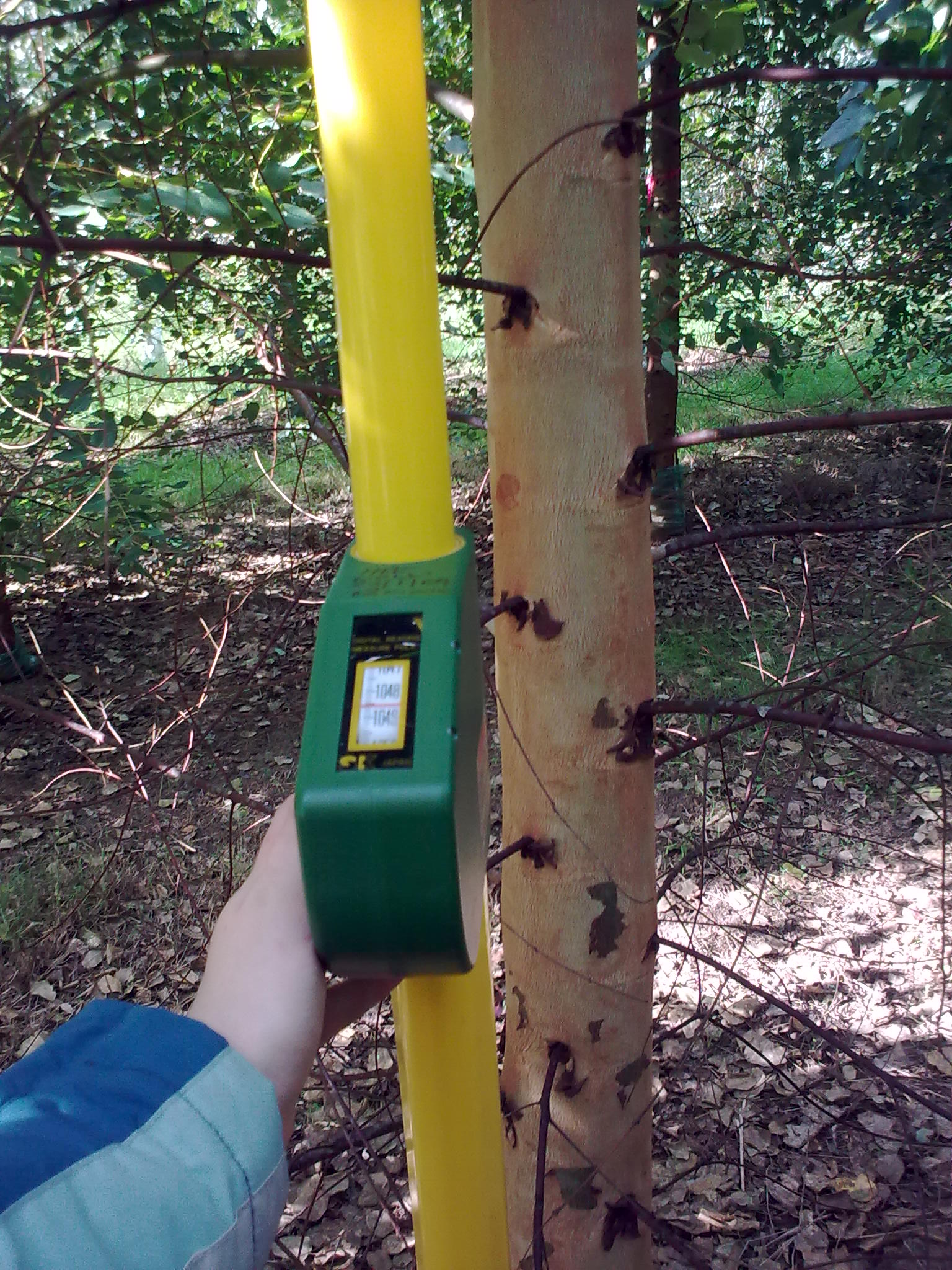
| Leaf form in eucalypts | Juvenile leaves of the different species planted in the Common Garden |
| Mature Euc leaves of different species, stomatal density peels | Leaves of different Eucalypt species prepared for stomatal density peels |
| Measuring tree heights | Measuring tree height in a Eucalypt monoculture |
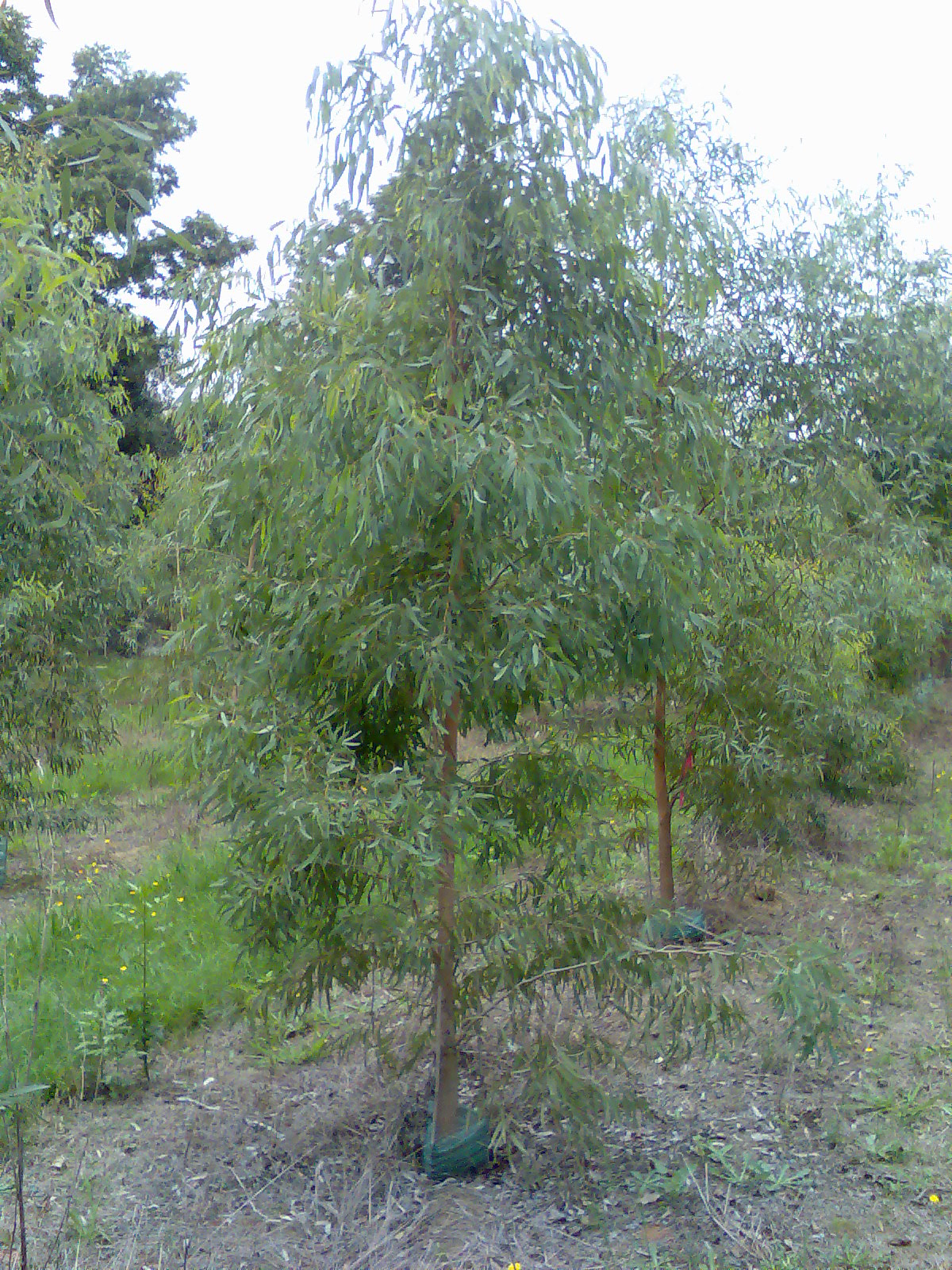

| Crebra - one of the focal species | Eucalyptus crebra, one of the focal species of this study |
| HRM sapflow probe in Euc tree | Heat Ration Method (HRM) sapflow probes - one of the methods being used to assess tree water use in the common garden |
Research Project Supervisors
Professor David Ellsworth, Dr Tony Haigh, Dr Brendan Choat
Awards/Honours
- Awarded best inaugural presentation by a student at the Ecological Society of Australia Conference, Melbourne, 2012
- Judged best oral presentation (and $50) in session 1E "Environmental Ecology" at the School of Science and Health Research Staff and HDR Research Showcase - 2012
- Awarded 2nd place and $500 towards her candidature in the Three Minute Thesis Competition for the HDR presentation 'Species diversity effects on forest ecosystem water-use'. Aimee was one of three who represented the College of Health and Science in the UWS wide competition - 2011
Publications
Choury Z, Wujeska-Klause A, Bourne A, Bown NP, Tjoelker MG, Medlyn BE, Crous KY, (2022) 'Tropical rainforest species have larger increases in temperature optima with warming than warm-temperate rainforest trees', New Phytologist, vol.234, no.4, pp 1220-1236
Bourne AE, Creek D, Peters JMR, Ellsworth DS, Choat B, (2017) 'Species climate range influences hydraulic and stomatal traits in Eucalyptus species', Annals of Botany, vol.120, no.1, pp 123-133
Bourne AE, Haigh AM, Ellsworth DS, (2015) 'Stomatal sensitivity to vapour pressure deficit relates to climate of origin in Eucalyptus species', Tree Physiology, vol.35, no.3, pp 266-278
Héroult A, Lin Y-S, Bourne A, Medlyn BE, Ellsworth DS, (2013) 'Optimal stomatal conductance in relation to photosynthesis in climatically contrasting Eucalyptus species under drought', Plant, Cell and Environment, vol.36, no.2, pp 262-274